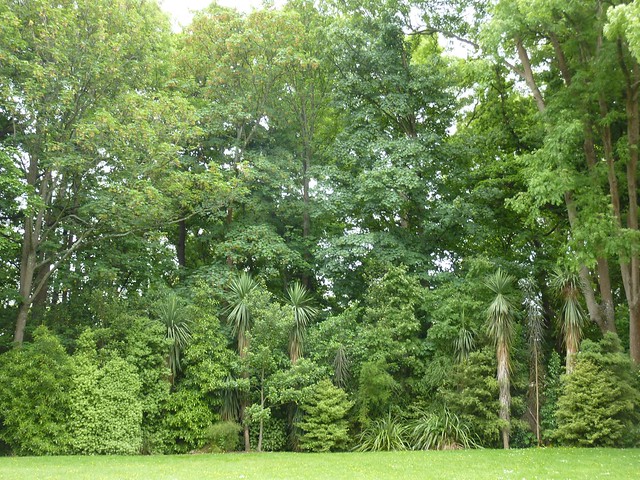RECENT ARTICLES
- CEBRA: An optimised and standardised sampling protocol for BioBlitz
- Stop it people, the plural of anecdote IS data!
- That's no pollinator, that's a flower visitor
- Add a scale to your macro photos
- What to photograph when counting the wild
- Imagine counting the wild on EVERY street in a city!
- My wild counting workflow
- A butterfly flew through
- Why iNaturalist observations without photos can be research grade
- Why you shouldn’t use a spreadsheet for data entry
- All articles ...
Native forest birds of southwestern Christchurch, New Zealand
Planting patches of native trees is essentially planting fantails.
written Dec 27, 2013 • by Jon Sullivan • Category: Wild Changes

In my recent blog, Native forest birds need forest in Christchurch city, I summarised some of my results from bird counts in southwestern Christchurch that clearly show the dependence, or at least strong preference, of native forest birds for the few patches of forest-like habitat in the city.
Here is a report I prepared in 2010 for Spreydon-Heathcote Community Board on the same topic as background for decisions on the management of Ernle Clark reserve and adjacent land. In it, I summarise some of the results of my bird counts in this area, which highlight the importance of small areas of relatively dense woody vegetation, like Ernle Clark Reserve, for native forest birds in Christchurch city.
| * All four plains kereru were along Ashgrove Terrace, two flying about Ashgrove Reserve. All kereru in forest-like habitat were along the Valley Road-Macmillan Ave walkway. | |||
| Bird species | Number of bird observations | ||
| Forest-like habitats | Cashmere hills suburbia | Plains suburbia | |
| Fantail | 141 (82%) | 15 (9%) | 15 (9%) |
| Grey warbler | 57 (85%) | 5 (7.5%) | 5 (7.5%) |
| Bellbird | 61 (42%) | 67 (46%) | 18 (12%) |
| Kereru | 4* (23.5%) | 9 (53%) | 4* (23.5%) |
| Distance (km) | 4.34 (21%) | 1.34 (7%) | 14.54 (71%) |
I did this to support the submission made by the Friends of Ernle Clark Reserve. This is a large volunteer group of locals of a wide ranges of ages and professions, led by botanist Alice Shanks. We have been meeting mid-afternoon on the fourth Saturday of each month for a decade now to weed and tidy the reserve.
The Spreydon-Heathcote Community Board got involved when the Christchurch City Council purchased a large wooded property adjacent to Ernle Clark Reserve and developed a draft landscape plan for the combined site. This included plans to open up areas, to contain the current plantings of native species (including the Millennium planting done by local school children in 2000), and to restrict the vegetation beneath the canopy to below head height in much of the reserve to allow people unrestricted views of the river. That was in 2010, and the plan has evolved greatly since with a good amount of discussion and collaboration between the council and locals.
Ernle Clark is one of the last patches of Heathcote River floodplain habitat and contains a diversity of species including a number of rare or unusual native plants and insects. It is one of the few places in the southwestern corner of lower Christchurch where it you can commonly see or hear the likes of fantails, grey warblers and bellbirds. Opening up the understorey of this area to make it more like the traditional English parks of Christchurch would undoubtedly make it a less useful habitat for native forest birds.
